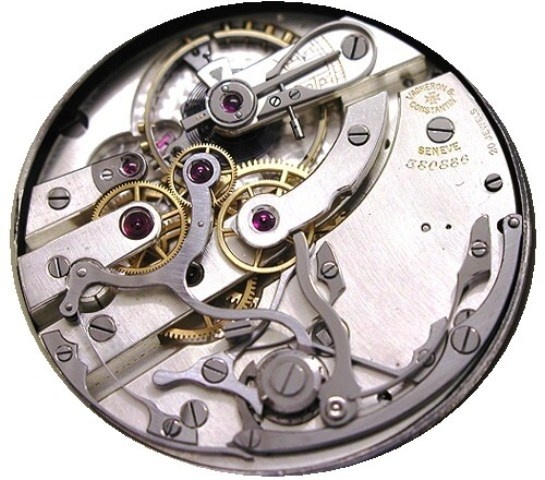
Tick Talk
[Vacheron Moderator]
2195

A brief study of the Corps of Engineers pocket chronographs
With the creation of the American Heritage Project in support of VC’s newly opened New York Boutique, there has been renewed interest in historic timepieces with American connections. Most ubiquitous perhaps are the Corps of Engineers silver-cased pocket chronographs from 1918 to 1920.
The official archives revealed that the American Expeditionary Force signed a contract with Vacheron & Constantin in May of 1918 for 5,000 watches to be delivered to the U.S. Army Corps of Engineers. This was an extremely ambitious undertaking for the manufacture and, in fact, the entire contract was never fulfilled. When the last deliveries were concluded in 1920, only 3,289 V&C timepieces were received by the Corps.
For a detailed discussion, please refer to the earlier posts; The Watch That Went to War, Parts I and II.
With this update, I’d like to present the three different chronograph movements used for the series, with a surprising discovery.
There exists an obvious difference in movement finish and construction during the production run of these Corps chronographs. Indeed, they can be differentiated by movement serial numbers, as follows:
380xxx with ½ plate, rhodium finish and capped column-wheel:

381xxx with curved finger bridges and gilt finish:

382xxx to 386xxx with straight finger bridges and gilt finish:

The earliest 380xxx series and final 382xxx-onward watches exhibited traditional V&C architecture, which can also be found in their commercial chronographs of the period. The outlier are the middle-period 381xxx movements and their unusual-for-V&C curved finger bridges.
Acknowledging the ambitiousness of the AEF contract, it would be reasonable to suspect that an outside supplier was recruited to help, but who? After examining dozens of movements over the past few years, a clue finally presented itself with this 381890 movement:

Clearly the pressures of production and delivery had their effect not only upon V&C, but also on the outside provider. With this example, and others I’ve since found, the proprietary signs of the original ebauche supplier were not completely obliterated. Notice the distinctive cartouche within which the movement serial number is engraved. Further note “+ 54714” barely visible on the main plate, between the bridges.
The cross symbol signifies a Swiss patent or brevet. This particular patent 54714 was published on the 17th of June, 1912, for a “Mécanisme de commande perfectionné de la roué de compteur dans les mouvements à chronographe-compteur” or an improved stop-watch control mechanism. The applicant was Paul Nardin Successeurs.

When founder Ulysse Nardin died in 1876 at the young age of 53, he was succeeded by his only son, Paul-David. The company name was changed in 1886 to Paul-D. Nardin, au Locle and again in 1905 to Maison Paul-D. Nardin, successeur d'Ulysse Nardin, au Locle. Following the death of Paul in 1920, the company became Ulysse Nardin SA in 1922 and remained in family hands until 1983. The manufacture was the largest supplier of marine chronometers in Switzerland and fully up to the standards required by Vacheron & Constantin.
The intricate relationship between Swiss manufactures is always fascinating. I hope you’ve enjoyed this brief peek into the past.

A brief study of the Corps of Engineers pocket chronographs


I did, I did enjoy this history lesson.

Pin-Set Movement

Really neat detective work.

"Examined By Vacheron & Constantin"

I just had that same watch delivered!
